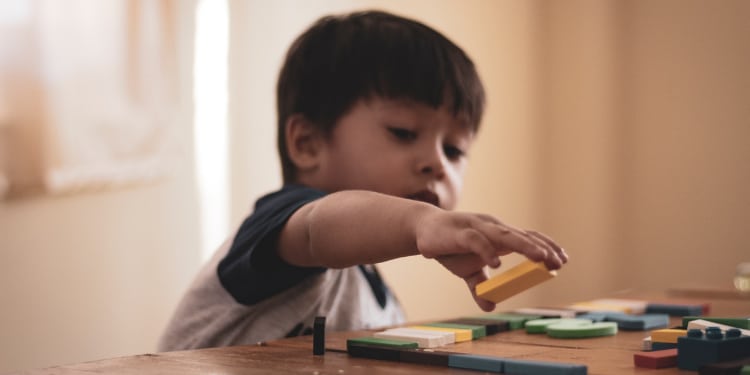











Parents and children can become separated for a variety of reasons. A parent may struggle with addiction, or experience mental illness. In some cases, parents have incidents of abusing or neglecting their child, which leads to a temporary placement of the child with another caretaker. Or, parents may be separated or divorced, and financial or custody-related circumstances lead to extended time away. In some cases, the separation is the result of the child wishing to no longer see a parent, typically when there is divorce and court-mandated visitation.

Whatever the reason for the separation, when it is deemed appropriate for a child and parent to begin spending time or living together again, reunification can be challenging. There are a variety of ways that mental health professionals and social service workers help parents and children get back together. This process often entails what is known as reunification therapy, a type of family therapy aimed at reestablishing severed relationships between parents and children.
When parents are unable to care for a child, the child may be living with another family member, foster parent, or residential setting. In some cases, they live with one parent but have not had visitation or time with the other for months or years.
Whenever possible, courts and professionals encourage the reunification of the child with both parents of origin (meaning both biological or legally adoptive parents). Ideally, all efforts are taken to safely unite the parent and child. The goal is usually to do this as quickly as possible so that there’s minimal interruption to the family bond.
Movies and media can sometimes make it seem like any parent found to neglect or abuse a child is unfit to parent forever. However, parents that express regret for their past behaviors and engage in treatment for addiction or mental illness, or attend classes on safe parenting, can, in time, earn back the trust of the child and the support of social services. This is the more common set of circumstances that ultimately drive families to seek out reunification therapy. However, as noted above, separated families can also be required to attend reunification therapy by judges if the children refuse to see one of their parents.
Reunification therapy doesn’t necessarily refer to one specific therapy modality, as a variety of counseling techniques may be used. It typically involves some type of family model that incorporates support for both the parent and child and helps them communicate better and build back trust. The therapy itself works in conjunction with broader interventions, meant to make the ultimate goal of the intervention successful.
The following processes may all be part of the reunification process:
A licensed therapist, social worker, or other professional will typically begin with a broad assessment. This may involve interviewing the parent, child, extended family members, and others present in the child’s life such as teachers or daycare workers.
The professional will assess all aspects of the child’s and parent’s lives. They may screen for addiction and mental illness. They will also consider if there may have been domestic violence between the parents and any abuse or neglect of the child.
A child’s development and needs, the adult’s parenting skills, and the family support system will also be considered. Financial struggles, and how these affect the family, will be assessed. Often a caseworker will conduct a home study, and will look at the environment the child will be visiting or living in.
All of these factors will go into an overall plan to address any aspects that affect the well-being of the child and the family. This assessment then informs the goals and steps needed to begin and complete reunification.
Case management is the overall process within which therapy treatment works. A case manager, who is sometimes a licensed social worker, helps create a long-term plan towards reunification, based on the assessment. The case manager may use the following practices, as outlined by the Child Welfare Information Gateway:[1]
In some cases, parents do not have a reasonable understanding of their child’s behavior. They may have unrealistic expectations of the child or may be making the situation worse with their parenting style. In this case, parenting classes can be part of a broader plan.
Multiple types of counseling may be included within the broader reunification plan. Here’s a look at some of the more common therapies:
When available, PCIT is sometimes recommended as part of reunification. Studies show that it can improve child-parent outcomes for younger children, and decrease future incidents of mistreatment.[2] PCIT usually includes weekly sessions and teaches skills referred to as praise, reflect, imitate, describe, and enjoyment (PRIDE).
During PCIT, the therapist observes the parent directly, and can teach and coach in the moment. This is shown to be effective at solving behavioral and discipline problems within families with young children.
Research shows that PCIT works particularly well for families where young children have oppositional defiant or conduct disorders. The child’s behavior improves, as does the adult’s parenting skills. Parents also report less stress in handling difficult situations.[3]
In cases with middle or older age children, there are sometimes alienation aspects involved in separation. One or both parents may be resentful or angry towards one another, and this affects the child. The child may be influenced, directly or indirectly, to distrust or dislike the other parent.
If one parent stays in the original home, and the other leaves, the child may feel confused or abandoned. Due to custody disputes, one parent may deny time with the other. This is not always due to abuse or neglect by the denied parent, but may simply be due to the preference of, or legal advice given to, the other parent.
In this case, children become understandably confused or conflicted. They may have feelings based on misinformation or may blame themselves for the parent leaving. They may feel loyal toward one parent over the other. When the separated parent is then able and willing to see the child, the child may not want to see them. Many family judges understand these dynamics and often order family therapy or other interventions to address these problems.
Family-based therapy can vary depending on the circumstance. It may involve separate or joint sessions with both parents, the child, foster parents, or others involved. The adults may need to work through the resentments they have towards each other. The children may have a chance to ask questions or better understand the family situation.
This may also be a chance for the children and parents to better empathize with each other. This makes them more understanding of behaviors that may have seemed confusing, defiant, or insensitive previously. This is also a chance for children who feel shame or guilt to work through these blocks that can affect the relationship.
Often parents are referred to individual therapy during the reunification process. Common conditions that could affect a parent include anxiety disorders, depression, addiction issues, post-traumatic stress disorder (PTSD), or bipolar disorder. All of these can significantly improve with appropriate therapy and/or medications. In some cases, this can largely resolve the issues that led to the separation.
Children also commonly suffer from anxiety or may have PTSD relating to abuse, neglect, or other events that have occurred in relation to the separation. A common treatment for children with symptoms relating to trauma is called trauma-focused cognitive behavioral therapy, or TF-CBT. This therapy helps children deal with feelings and false beliefs that may be leading them to blame themselves for what’s happened. Resolving such feelings may allow the child to better understand their situation and work through feelings involving reunification with their parent.
The process of physically reuniting the child and parent may vary. This may begin with family therapy and progress into visits, a trial living period, or a combination of the three. In custody or family court cases, the process may be monitored by therapists, case managers, and the court system to ensure the parent is acting in a safe and supportive manner.
Depending on the severity of the situation, the time of the final reunification may vary. The process could last weeks to years. If the parent continues to struggle with the issues that led to mistreatment, the process may involve multiple attempts at reunification.
If all efforts are taken and a court decides it is not safe for the child to return, they may be placed with a different caretaker long-term. When possible, this is with a close family member such as a grandparent or aunt, or uncle. When a kinship placement isn’t an option, the child may be placed in long-term foster care.
Ideally, reunification works. The process is not always the same, as it’s not one-size-fits-all. The actual counseling operates within a larger framework, influenced by the legal situation, child services regulations, custody agreements, and the needs of the parents and children. The process can be challenging for everyone involved, but hopefully results in a safe, long-term reunion of children and parents.
References